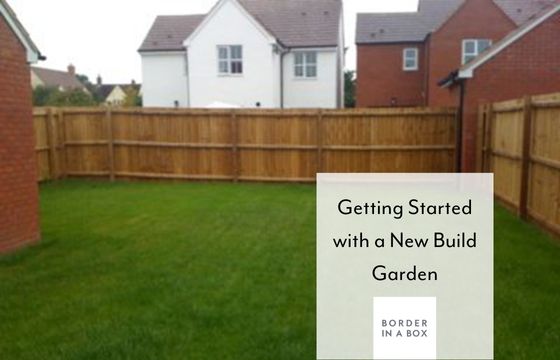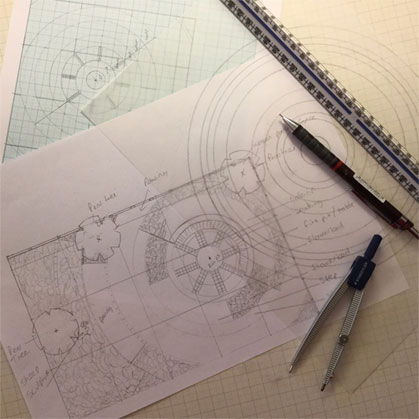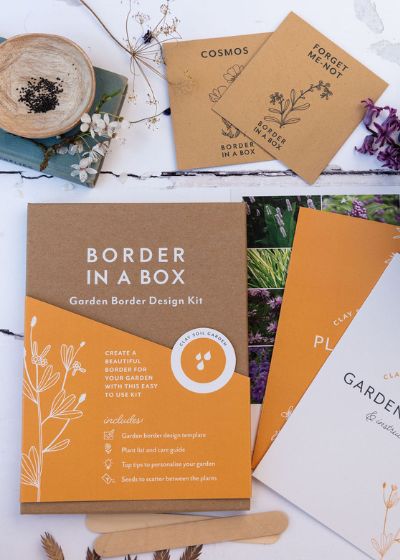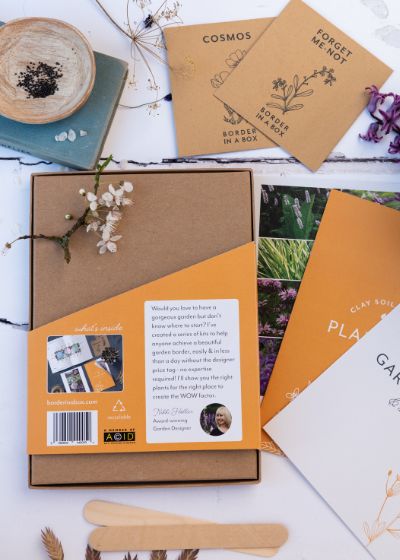Getting Started with a New Build Garden

You’ve been sat looking at the ‘blank canvas’ of your new build garden. Where do you begin? It all feels so difficult right now, so you leave it for another day….
We’ve all been there, whether it’s decorating the living room, applying for a new job or ‘tackling the garden’ it’s one of those jobs we keep putting off. I was in the same boat a few years back after I had moved into a new home and experienced the following problems:
- No clue about gardening but wanted a pretty space
- No time or desire to research plants and gardening ideas on the internet or books
- Garden centres were overwhelming with too many plants to choose from and no one around to give advice or help
- Plant names unpronounceable and written on labels that are too small to read & understand
- No idea what plants would be suitable for my garden or soil
- No knowledge about what plants go well together let alone to create the WOW factor
- No clue as to how to take care of or maintain the plants once they’re in the garden
- A tight budget
And then there’s the soil to contend with. Its rock hard. I found out that the top layer of soil was scraped off and sold on. Then all the machinery compacted the ground during the build of the houses. What gets left is grim. How can any plant survive let alone thrive in such a soil?
New build soil recommendation:
I would recommend before planting anything, that the compacted and poor soil is conditioned first. Remove any rubble and add in some organic material. This can be purchased from the garden centre in bags, or you can buy tonne bags. Dig this into the soil – it will be hard work, but worth it.
Top Tip: Alternatively, if you don’t want to dig the garden over, use raised beds.
But don’t despair, there’s a lot you can do regardless of your budget and here’s some ideas to get you started along with some more tips.
Garden Planning

First things first – decide what you want from the garden space. Imagine what you want your garden to look like. I’ve created a list of features to consider – give the following list to every member of the household and get them to say which one is a definite need, or on the ‘would be nice’ list. Once you know exactly whats on the ‘required’ list, you can then start planning the next steps.
Lawn/grass area
Flower borders
Pots/containers
BBQ built in
Patio/seating area
Clothes drier or line
Tool shed
Garden seats
Play area
Gravel area
Greenhouse
Herb garden
Raised beds
Veg patch
Pergola
Rock garden
Water feature
Colour scheme
Theme
Pets
Livestock
Statues/ornaments
Hedges
Dustbin hide
Garden Design
Once you’ve decided on what you need and can afford, start with the hard landscaping first. This is likely to take up most of your budget. Ask a landscaping expert for a quote before you buy anything, as paving, gravel, turf will probably cost more than you expect. There are ways to get the garden of your dreams on your budget and the garden designer or landscaper can help you with this.
Most new-build gardens are on the small but manageable size, so will likely include a patio, lawn, garden shed and some plants. If you’re doing the garden yourself, draw out the design on a piece of paper. Take into consideration where you want to sit – in the sun or shade (or both). Ensure the patio is large enough to accommodate table and chairs comfortably. Ideally with 1m space for a chair to be pulled away from the table (so you’re not falling into a border, shed or pond!)
Once the structure is in place you can think about the planting – the most exciting bit (in my opinion) and it will bring the garden to life.
Planting Plans
Have a look around the neighbourhood and see what is growing well and is healthy, chances are it will grow well in your garden too. Use one of the many apps such as the one by Candide to identify it from a photo. It will also advise on the plant’s care too.
Bear in mind whether the plant is growing in the sun or shade. You may find the fence can create a shadow in the garden, yet the garden is overall sunny. If you plant a sun loving plant in the shade, it is unlikely to thrive and vice versa.
If your budget is small you can ask friends and family for cuttings from their garden plants – we all love free plants! I also find there are plants in the garden centre that are ‘past their sell-by date’ and are cheaper than paying full price. They may need some TLC, but it’s a great way to save some money.
Sowing from seed can also be cost effective too plus you have the enjoyment of nurturing the seed to a mature plant. It can be very satisfying and also brilliant for mindfulness. I find it’s a great way to unwind after a busy day and focusing on the seedlings and plants. No need for a greenhouse either – just buy some compost for seedlings and you can use egg boxes or any container that fits on the windowsill – sow the seeds according to the instructions on the packet and off you go!
Some seeds don’t need to be started off in trays – they can be sown directly into the prepared soil in the garden, such as Forget-me-Nots. I love them as they’re a bright blue and look fantastic with tulips. I include them with every Border in a Box garden design kit.
Planting bulbs is another easy way to add colour to your garden – just plant them to the right depth which a general rule of thumb is 2-3 times the size of bulb. So if the bulb measures 2cm tall, then plant the bulb 4-6cm deep. The packet will probably advise you. Bulbs can provide year round interest too, they’re not just for spring!
Don’t expect to turn into Alan Titchmarsh overnight – some seed sowing won’t go according to plan. But you learn from every success and failure ????
Another way to get a garden border on the cheap, is to buy juvenile plants. You may find at your local garden centre that they have ‘basket plants’ which are in 9cm pots. You may find a similar plant in the main nursery that is in a 2 litre pot that is 2 or 3 times the price. It’s a great way to stretch the budget. I would advise buying a mixture of juvenile and mature plants to help the garden border feel more established.
Idea: remember plants can go vertically as well as in the ground.
What plants do I recommend for starters?
Ideally start with some structure, an evergreen shrub such as Choisya is great. There are different varieties to choose from, so pick one suitable for your size of garden – the Choisya × dewitteana white dazzler will grow to around 1.5m tall and wide compared to Choisya ternata sundance which grows to 2.5m tall and wide.
Then choose a perennial – this is a plant that will die back in the winter and re-grow in the spring. A Persicaria ticks all the boxes as it will provide ground cover too. Persicaria bistorta ‘Superba’ grows to around 60cm tall and has thin stems with pink flowers. Its fast growing and flowers from June to October. It prefers damp soil, so if you have a boggy patch, try this plant and I’m sure it will love it.
With new build properties you are often overlooked by the neighbours, so a climbing plant to scramble over a pergola or fence is needed. The Clematis ‘Freda’ is gorgeous when it’s in flower – pretty pink flowers from May-June. The downside is that its deciduous (loses its leaves in the autumn), so you may want to plant an evergreen variety alongside it.
If you get stuck for planting ideas, my ready-made garden kits takes out all the guess work, and shows you what to plant where to get the wow factor. A shopping list is included so you know what plants to buy, how many and where to plant them. It’s a simple solution and helps anyone who is new to gardening to achieve a gorgeous planted border in less than a day.
Border in a Box – Clay Soil version
There are 8 designs to choose from, but this one is specifically for anyone with a new build home and/or clay soil. The plants work in normal soil too, so if you get bored of digging and want to create a raised bed instead, you can still use the planting plan. All of the designs work together too, so you can add to the garden if needed. Each design covers a 3m x 1m border, but it can be adapted to fit any shape or size.
Here’s the link for more information and the shop – https://borderinabox.com/product/clay-soil-garden-flower-border-kit/


Hopefully these ideas and tips have helped, but if you would love further assistance, drop an email to hello@borderinabox.com with your query. If you would like to join the Garden Lovers Club, its free! The weekly newsletter includes ideas, tips, places to visit, planting plans, seasonal design inspiration etc. Simply click the button below and fill in your email address.
 Free Delivery
Free Delivery Upgrade to 24 Hour Tracked Delivery
Upgrade to 24 Hour Tracked Delivery

